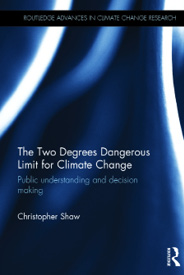The Energy Transition
The Winter 2017 Issues in Science and Technology explores the transition from fossil fuels to a cleaner global energy system. Varun Sivaram addresses the perils of locking in existing clean energy technologies at the expense of innovative alternatives. He offers a plan to transform lock-in barriers into bridges for next-generation energy technologies. Christine Sturm, a former executive in the German utility industry, examines the complexities of Germany’s transformation of its energy sector, the Energiewende, and why the country isn’t on track to meet its ambitious emissions-reduction goals. Combining personal narrative with analysis of solar technology deployment in India, Kartikeya Singh provides an illuminating portrait of how politics, capitalism, and energy poverty are combining in strange ways across India. Finally, Jack Barkenbus finds that electric vehicles can help lower greenhouse gas emissions—depending on where and when they’re recharged.
Editor's Journal
Take a Deep Breath
Anxiety reigns among the overeducated, the hyper-rational, the super-scrupulous. Academics, think-tankers, and journalists are trying earnestly to understand why so many Americans have lost their respect for intellectual rigor. Hell, there seem… Read More

Gallery
Fashion, Animal, Sound
Perspectives
Science’s Role in Reducing US Racial Tensions
The United States of America is embroiled in fights, debates, riots, and sit-ins over racial injustice. In 2012, the death of Trayvon Martin, a black teenager, sparked protests about stand-your-ground laws in… Read MorePhilosopher’s Corner: The End of Puzzle Solving
Back in the mid-1990s, social commentary on science was dominated by the “science wars”—crossfire between one or another humanist scholar and the science establishment. The conversation was often shrill. Observers such as… Read More
Features
A Technology-Based Growth Policy
Monetary and fiscal policies to stimulate the economy are no substitute for the national research and development investment needed to spur productivity growth and create high-paying, high-skill jobs. Talk to people in… Read MoreElectric Vehicles: Climate Saviors, or Not?
There are several reasons to support the growth of electric vehicles (EVs) worldwide, but one of the most compelling is its potential to reduce greenhouse gas emissions that emanate from petroleum-driven vehicles.… Read MoreUnlocking Clean Energy
Confronting climate change will require transforming the world’s energy systems to slash their greenhouse gas emissions. Although temperatures continue to rise at an alarming rate, some observers argue that increasing global investment… Read MoreInfrastructure and Democracy
The recent bitterly contested election revealed little common ground between the major parties. Yet President-elect Donald Trump and his opponent Hillary Clinton had at least one shared priority: both agreed that America’s… Read MoreScientific Controversies as Proxy Politics
Read MoreScientific controversies are often not about the science. Instead, science provides an arena in which we attempt to come to terms with much deeper issues—the relationship between capitalism and the environment, the meaning of risk, the role of expertise in a democracy.
Of Sun Gods and Solar Energy
Come, O Surya, of thousand rays, the store-house of all energies, the Lord of the world, have mercy on me thy devotee, accept this Arghya, O, Mother of the day. —Invocation of the Spiritual… Read MoreInside the Energiewende: Policy and Complexity in the German Utility Industry
When the first German law to incentivize renewable energy (RE) came into effect in 1991, even its most ardent supporters could not have imagined that 25 years later RE would provide Germany… Read MoreJournalism Under Attack
Several weeks after Election Day, as the final ballot count wound down, it was reported that Hillary Clinton’s lead in the popular vote had surpassed 2 million. On November 27, President-elect Donald… Read More
Book Reviews

Listening to Patients
This book was very difficult to review. In Ordinarily Well: The Case for Antidepressants, Peter Kramer, a psychiatrist and best-selling author, makes two arguments with which I agree. One is that… Read More
Change’s Challengers
On the one hand, the world is obviously a much better place than it used to be. Don’t take my word for it: the past few years have seen a surge of… Read More
Anchor Management
Climate policy makers and political leaders love global targets. By adopting climate stabilization goals to limit temperature increases to a specified amount—usually two degrees Celsius (2°C)—above preindustrial levels, they demonstrate… Read More
